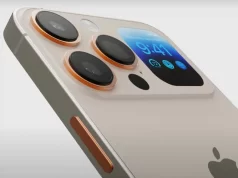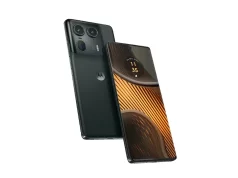Table of Contents
Motorola released the Motorola Razr Series and it has sparked a lot of excitement and support. This content is the review and what you should know about the Razr series before you purchase.


The Motorola Razr 50, also known as the Motorola Razr 2024 in the US, addresses some of the shortcomings of its predecessor by adding a larger cover screen and water resistance. These updates bring it closer in competition with Samsung’s Galaxy Z Flip series.

Join our Telegram Channel for Updates
Like other Motorola phones, there are some differences in naming depending on the region. While we’re reviewing the Razr 50, the same insights apply to the US version, the Razr 2024.
The Razr 50 now features the same cover display size as the Razr 40 Ultra, allowing users to run full apps and use the camera viewfinder properly on the external screen. This is a significant upgrade from the small outer screen of the previous Razr 40.
Another key improvement is the IPX8 water resistance, making the Razr 50 more durable and competitive with other foldable phones that offer similar protection.
There are a few other changes worth mentioning, though they aren’t major. The main camera has been adjusted from 64MP to 50MP, but the sensor size is unchanged, so this doesn’t drastically affect performance. The phone now uses a Dimensity 7300X chipset instead of the Snapdragon 7 Gen 1, which is more of a sidegrade than an upgrade. Some users might appreciate the faster 15W wireless charging, up from the previous 5W, but the unboxing section of the review hints at another related change that might not be as positive.
Motorola Razr 50 Specifications:
Body
-
- Dimensions: 171.3 x 74.0 x 7.3 mm
- Weight: 188g
- Materials: Glass front (Gorilla Glass Victus), silicone polymer back (eco leather), aluminum frame (6000 series), stainless steel hinge
- Water Resistance: IPX8 (up to 1.5m for 30 minutes)
Display
-
- Main Display:
- Size: 6.9″ Foldable LTPO AMOLED
- Features: 1 billion colors, 120Hz refresh rate, HDR10+, 3000 nits peak brightness
- Resolution: 1080 x 2640 pixels, 22:9 aspect ratio, 413 ppi
- Cover Display:
- Size: 3.6″ AMOLED
- Features: 1 billion colors, 90Hz refresh rate, HDR10+, 1700 nits peak brightness
- Resolution: 1056 x 1066 pixels, 413 ppi
- Protection: Gorilla Glass Victus
- Main Display:
Chipset
-
- Processor: Mediatek Dimensity 7300X (4 nm)
- CPU: Octa-core (4×2.5 GHz Cortex-A78 & 4×2.0 GHz Cortex-A55)
- GPU: Mali-G615 MC2
Memory
-
- Options: 256GB storage with 8GB RAM, or 512GB storage with 12GB RAM
- Type: UFS 2.2
Operating System
-
- Android 14
Rear Camera
-
- Main (Wide): 50 MP, f/1.7, 1/1.95″, 0.8µm, dual pixel PDAF, OIS
- Ultra-Wide: 13 MP, f/2.2, 120˚, 1/3.0″, 1.12µm, AF
- Video: 4K@30fps, 1080p@30/60fps, gyro-EIS
Front Camera
-
- 32 MP, f/2.4, wide, 0.7µm
- Video: 4K@30fps, 1080p@30/60fps
Battery
-
- Capacity: 4200mAh
- Charging: 30W wired, 15W wireless
Connectivity
-
- 5G support
- eSIM and Dual SIM
- Wi-Fi 6e
- Bluetooth 5.4
- NFC
Miscellaneous
-
- Side-mounted fingerprint reader
- Stereo speakers
Design, Build Quality, and Handling of the Motorola Razr 50
If you took last year’s Razr 40 Ultra and made it water-resistant, you’d get the Motorola Razr 50. This change, along with some others, makes the Motorola Razr 50 a strong competitor against Samsung’s Galaxy Z Flip series.
Design and Build
The Motorola Razr 50 features a significant upgrade in its cover display—a 3.6-inch panel with two camera holes that give it a distinctive Razr look. This panel is protected by Gorilla Glass Victus, similar to the Razr 40 Ultra. The Razr 50 also incorporates a strip of eco-leather on the back, giving it a more refined aesthetic compared to the flagship model’s edge-to-edge cover display.
The phone’s frame is made from 6000 series aluminum, while the outer hinge cover is constructed from stainless steel. Both materials have a satin finish, giving the device a premium feel.
Hinge and Display
The hinge on the Motorola Razr 50 allows the phone to stay open at various angles, making it versatile for different use cases, such as using it as a tabletop tripod or for overhead and waist-level shooting. The hinge’s stability also enables a camcorder mode.
When fully opened, the Motorola Razr 50’s OLED display appears flatter than that of the Galaxy Z Flip, though there is still a slight waviness visible if you look for it. While some may focus on the crease, in everyday use, it’s not very noticeable. However, it’s essential to avoid removing the display protector.
The Motorola Razr 50 folds completely flat, a feature Motorola introduced in its foldables well before Samsung achieved this milestone last year.
Color Variants and Handling
The Motorola Razr 50 is available in several color options, including Spritz Orange (which may be called Arabesque in some markets), Beach Sand (Pumice Stone), and Koala Grey (Steel Wool).
The phone supports both physical SIM cards (with a single nano-SIM slot) and eSIMs, allowing for dual SIM functionality. There’s also a version of the Razr 50 that supports two nano-SIMs but lacks eSIM support.
The control layout is standard for clamshell foldables, with the power button and volume keys located on the top half of the phone. The volume buttons are a bit small, but the capacitive fingerprint reader embedded in the power button works reliably, even when used with the left index finger.
Competition and Final Verdict
Competition
The Motorola Razr 50 finds itself in a fairly exclusive space, competing mainly with Samsung’s Galaxy Z Flip series in the global market. Other clamshell foldables are available, but they tend to be limited to specific regions or markets.
Pricing varies significantly by region. In Europe, the Razr 50 is priced around €800, while in the U.S., it’s known as the Razr 2024 and is listed at $700. This makes the Razr 2024 a compelling option in the U.S., where it’s significantly cheaper than the Galaxy Z Flip5 and Z Flip6, priced at $1000 and $1100, respectively. Conversely, in Europe, the Galaxy Z Flip5 is about €100 less than the Razr 50, which may make the Samsung device a more attractive option.
When comparing features, the Razr 50 stands out for its superior battery life, faster charging, and a more versatile cover display, which supports full-blown apps and serves as a functional camera viewfinder. Its foldable display is also smoother than that of the Galaxy Z Flip. However, the Razr’s camera performance is decent but not exceptional, and Samsung’s devices may have a slight edge in most photography scenarios, though the Razr’s ultra-wide camera can handle close-ups better.
The Galaxy Z Flip series, particularly the Z Flip6, offers a more powerful chipset, making it a better choice for those who prioritize gaming. This performance difference may be a deciding factor for some users, despite the Razr 50’s advantages in battery life and display.
In the U.S., Motorola appears to be phasing out older models like the Razr+ 2023 by pricing them similarly to the new Razr+ 2024. However, in Europe, you can still find the Razr 40 Ultra at a discount compared to the Razr 50. The Razr 40 Ultra offers better performance and 4K60 video recording but lacks the IPX8 water resistance and faster charging of the Razr 50.
For those willing to spend more, the Razr 50 Ultra or Razr+ 2024 are available for an additional €400/$300. These models offer a higher-performance chipset, better gaming longevity, superior displays, faster charging (with an adapter included), and generally better camera performance, though they lack an ultra-wide camera.
Verdict
The Motorola Razr 50 is a strong entry in the foldable market, bringing down premium features from last year’s Ultra model to a more accessible price point. It offers a large, bright cover display, excellent battery life, and submersion-grade water resistance, making it a solid competitor to Samsung’s Galaxy Z Flip series. However, its midrange chipset may be a drawback for gaming enthusiasts, and some display quirks, like suboptimal HDR handling and the lack of Dolby Vision, detract from the overall experience.
The Razr 50’s biggest downside is the lack of a charger in the box, though it comes with a somewhat questionable bundled case. Despite these drawbacks, the Razr 50 is an appealing alternative to the Galaxy Z Flip series, especially if you’re looking for better battery life and a more functional cover display. For those in the U.S., the Razr 2024 offers excellent value and is an easy recommendation given its lower price point compared to Samsung’s offerings.
Pros:
- Large, bright, high-refresh-rate cover display.
- Nearly creaseless internal display with great overall performance.
- IPX8 water resistance is a valuable addition.
- Excellent battery life.
- Clean and full-featured Hello UI with extensive cover screen functionality.
Cons:
- No charger in the box, though it includes a less useful case.
- Some issues with display HDR behavior and no Dolby Vision support.
- Midrange chipset that isn’t competitive for gaming.
Pricing:
- 256GB 8GB RAM: €1,027.71 | £775.99









